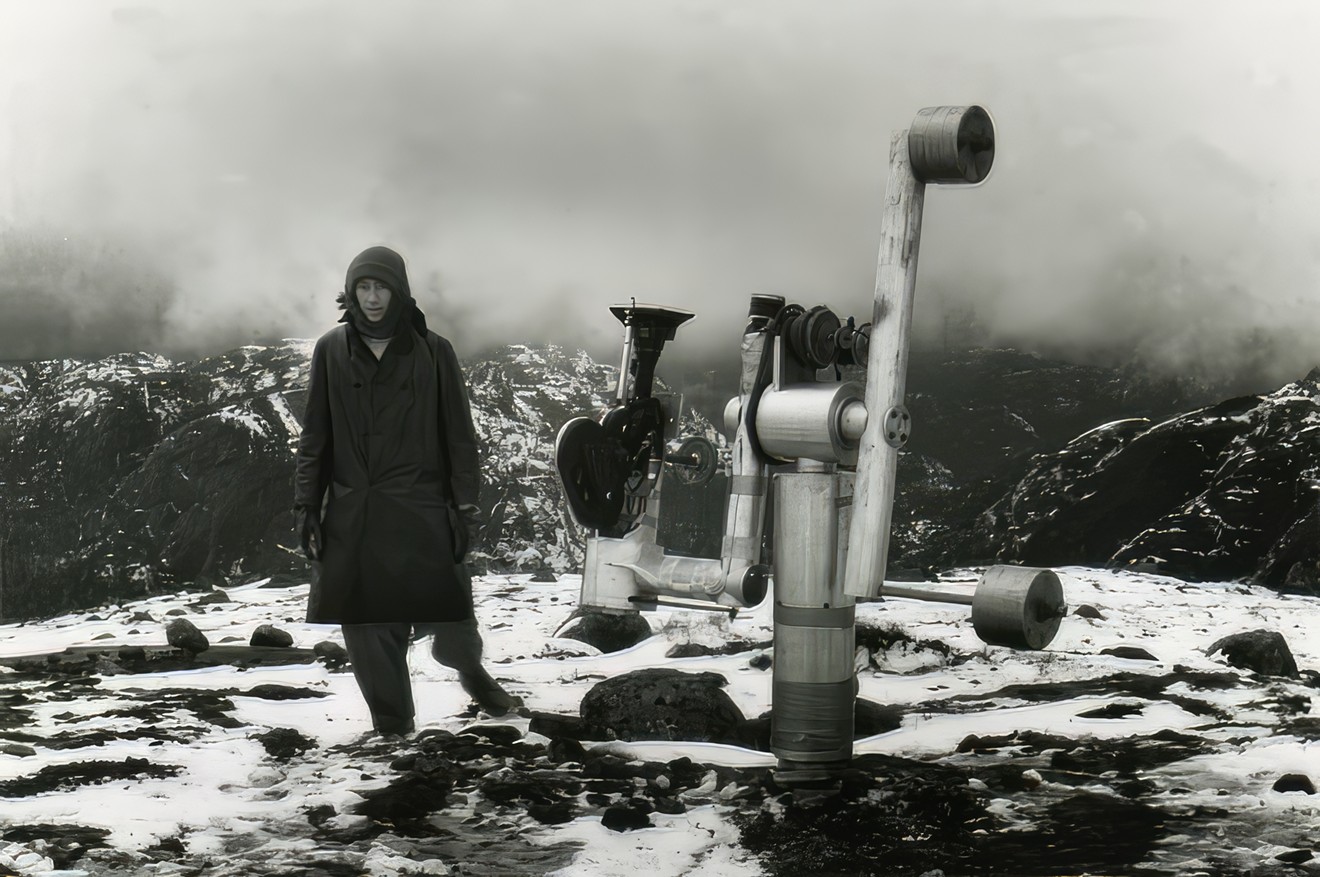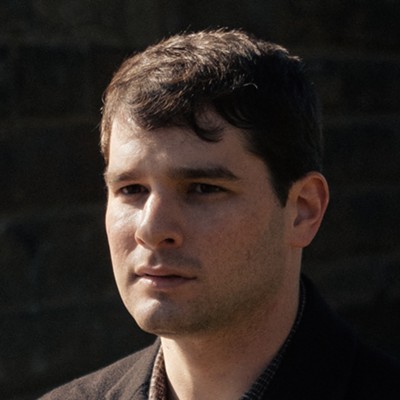It could be said that for serious cinema, we're living in the best of times and the worst of times. New York's cottage industry of repertory theaters like Metrograph and home-video platforms like the Criterion Collection are creating a new audience for classic, foreign, and arthouse films, fueled by new restorations from organizations like Martin Scorsese's Film Foundation. This comes amid a reckoning for the cinematic mainstream: Multiplexes are shutting down across the country, including here in South Florida, as Hollywood looks to reverse the damage done by streaming and decades of eroding audiences with nothing but blockbusters.
So, where does a 180-minute-long art film that consists entirely of several spinning shots of a barren tundra landscape fit in?
Screening for free at Emerson Dorsch this Saturday, May 20, Canadian filmmaker Michael Snow's 1971 film La Région Centrale is challenging for even hardened cinephiles. This is not even the hypothetical two-hour, black-and-white Serbian film that Marvel-loving TikTokers use to mock so-called "film bros." There's no plot in this film, no characters, and nothing traditional about it whatsoever. The film is inextricably linked to the way it was made: Snow constructed a huge robotic arm he called the "Camera-Operating Machine," stuck an Arriflex camera to the end, flew the entire apparatus by helicopter to a deserted, rocky spot in subarctic northern Quebec, and filmed it. The completed movie consists of a three-hour sequence of the shots he made, spinning the camera slowly, then quickly, then slowly again, to capture every part of the mountain, broken up by shots of X-shaped division signs.
So, why would someone make this? A better question: Why would someone sit down and watch it?
“With this film, one of the things that excites me is that it’s making new cinema grammar, and that’s hard to pull off," says Barron Sherer, an artist and curator of the Moving Image Alliance, who organized the screening. “This film has compositions that didn’t exist until this movie was made.”
Snow's achievement with La Région Centrale was redefining what the medium of film could artistically achieve. Fellow filmmakers such as Jean-Luc Godard, Jonas Mekas, and Chantal Akerman have praised the film, and its technical innovations changed the entire medium. He was credited with having invented an entirely new genre, "structural" film, defined by interest not in the content of the film or what's on the screen, but in the way it was made. Snow's films are structural because they draw attention to the techniques used in their creation, giving viewers "an awareness of what you're watching and how it's made," Sherer explains. The way the camera moves is more important than what it captures, from the spinning and twisting in La Région to Snow's earlier film Wavelength, which consists of a single, hour-long zoom shot.
Incredibly, Snow made this incredibly conceptual film using public money. He received a $28,000 grant from the Canadian Film Development Corporation, which would later help produce David Cronenberg's early features, such as the very controversial Shivers.
"He got a lot of money for this," Sherer says. "I think this is almost like a blockbuster work in avant-garde cinema. I mean, who has that kind of money to make such a challenging work?”
In addition to honoring Snow, who died earlier this year, Sherer hopes that screening the film in Miami will stimulate further appreciation of experimental film in Miami, especially from fellow artists. His Moving Image Alliance, which operates with funding from the Knight Foundation, specializes in supporting noncommercial film art, and he's been very careful to ensure the film is screened in the appropriate context. That includes an actual film projector.
"This movie is kind of like the perfect distillation of this whole project," Sherer says. “It just felt like the right thing to do, and the gallery is really supportive of this. For this screening in particular I wanted a gallery context. You've got to kind of prime yourself to kind of see it.”
Indeed, this is not the easiest work to sit with. Viewers who are not ready to stare at a spinning landscape for three hours may be turned off, but those that tune in will be rewarded with a unique, meditative, and even transcendent experience. Ultimately, La Région Centrale is a film that reflects its creator's somewhat irascible personality. The director submitted only four out of a possible ten films to this year's Sight and Sound Greatest Films of All Time poll: Four of his own films, plus The Gold Rush by Charlie Chaplin ("An old favorite!"). They do say, "Be your own biggest fan," don't they?
Michael Snow's La Région Centrale. 7:30 p.m. Saturday, May 20, at Emerson Dorsch, 5900 NW Second Ave., Miami; 305-576-1278; emersondorsch.com. Admission is free with RSVP at eventbrite.com.
[
{
"name": "Air - MediumRectangle - Inline Content - Mobile Display Size",
"component": "19274298",
"insertPoint": "2",
"requiredCountToDisplay": "2"
},{
"name": "Editor Picks",
"component": "17482312",
"insertPoint": "4",
"requiredCountToDisplay": "1"
},{
"name": "Inline Links",
"component": "18711090",
"insertPoint": "8th",
"startingPoint": 8,
"requiredCountToDisplay": "7",
"maxInsertions": 25
},{
"name": "Air - MediumRectangle - Combo - Inline Content",
"component": "17482310",
"insertPoint": "8th",
"startingPoint": 8,
"requiredCountToDisplay": "7",
"maxInsertions": 25
},{
"name": "Inline Links",
"component": "18711090",
"insertPoint": "8th",
"startingPoint": 12,
"requiredCountToDisplay": "11",
"maxInsertions": 25
},{
"name": "Air - Leaderboard Tower - Combo - Inline Content",
"component": "17482313",
"insertPoint": "8th",
"startingPoint": 12,
"requiredCountToDisplay": "11",
"maxInsertions": 25
}
]













